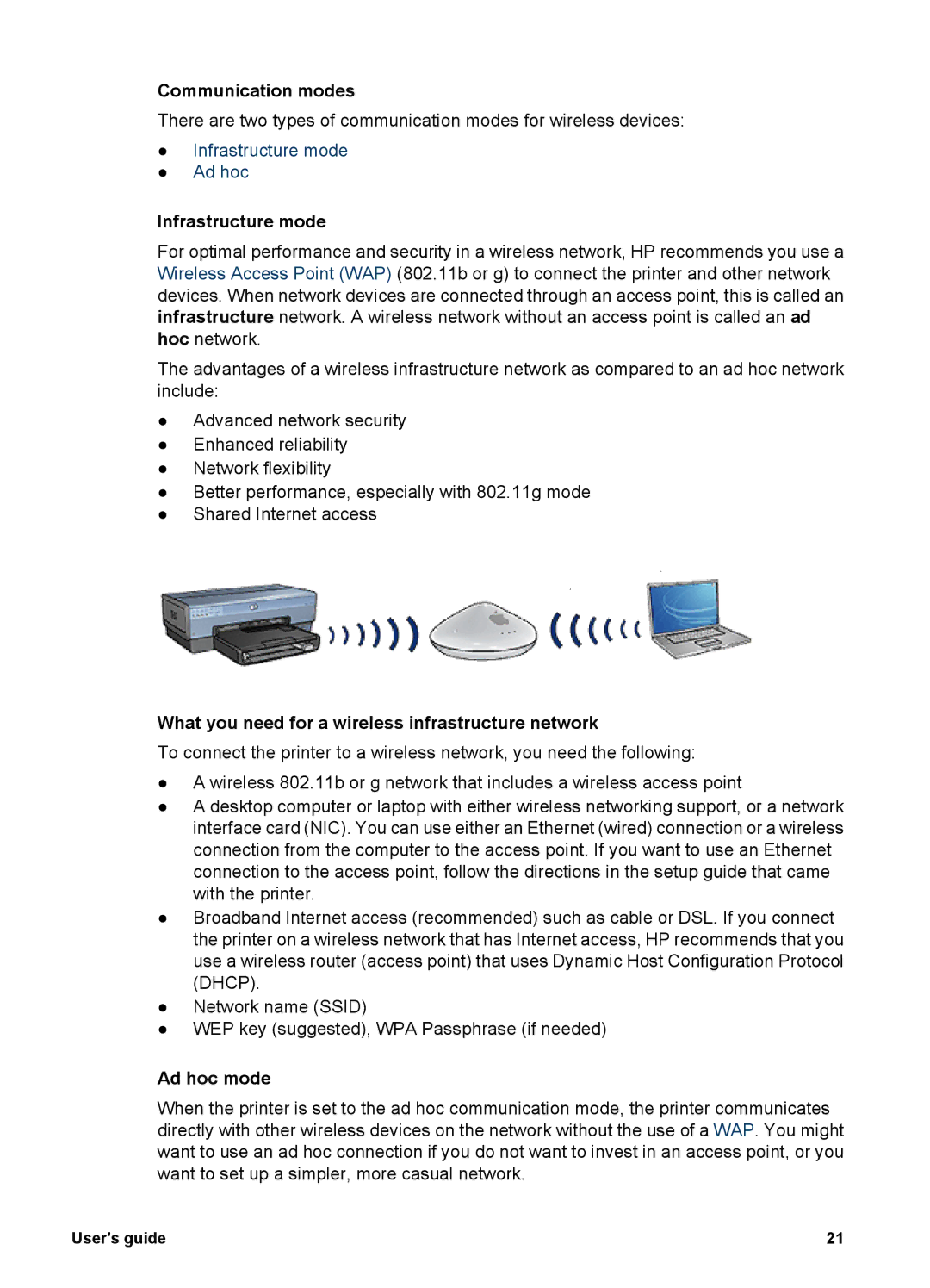
Communication modes
There are two types of communication modes for wireless devices:
●Infrastructure mode
●Ad hoc
Infrastructure mode
For optimal performance and security in a wireless network, HP recommends you use a Wireless Access Point (WAP) (802.11b or g) to connect the printer and other network devices. When network devices are connected through an access point, this is called an infrastructure network. A wireless network without an access point is called an ad hoc network.
The advantages of a wireless infrastructure network as compared to an ad hoc network include:
●Advanced network security
●Enhanced reliability
●Network flexibility
●Better performance, especially with 802.11g mode
●Shared Internet access
What you need for a wireless infrastructure network
To connect the printer to a wireless network, you need the following:
●A wireless 802.11b or g network that includes a wireless access point
●A desktop computer or laptop with either wireless networking support, or a network interface card (NIC). You can use either an Ethernet (wired) connection or a wireless connection from the computer to the access point. If you want to use an Ethernet connection to the access point, follow the directions in the setup guide that came with the printer.
●Broadband Internet access (recommended) such as cable or DSL. If you connect the printer on a wireless network that has Internet access, HP recommends that you use a wireless router (access point) that uses Dynamic Host Configuration Protocol (DHCP).
●Network name (SSID)
●WEP key (suggested), WPA Passphrase (if needed)
Ad hoc mode
When the printer is set to the ad hoc communication mode, the printer communicates directly with other wireless devices on the network without the use of a WAP. You might want to use an ad hoc connection if you do not want to invest in an access point, or you want to set up a simpler, more casual network.
User's guide | 21 |
